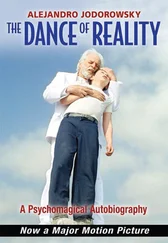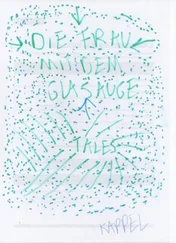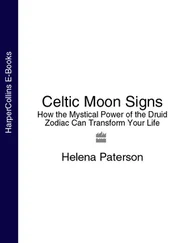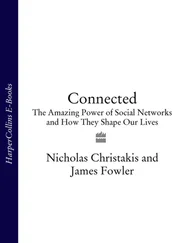If I understand right, you explain this theory to your clients, then you create a program for them.
That’s it! I establish a program, an act or a series of acts to accomplish in life in a given time frame: five hours, twelve hours, twenty-four hours. . An elaborate program based on their problem, designed to crack the character with whom they have identified themselves in order to help them reunite with their deeper self. For an atheist, I made him adopt the personality of a saint for a few weeks. For an indifferent mother, I assigned the duty of imitating maternal love for a century. To a judge, I gave the task of disguising himself as a tramp and go begging at a restaurant. From his pockets, he should take out handfuls of glass doll eyes. I thus created a character intended to establish itself in daily life and to better it. This is how my theatrical research gradually began to take on a therapeutic dimension. From being a director, I turned into a theatrical counselor, giving people their directions to take their place as a character in the comedy of existence.
I confess that I’m skeptical about the effects of this theatrical therapy, although the idea in itself is very interesting. How can an indifferent mother adopt the character of a loving mother and above all manage to achieve it during her lifetime?
First of all, do not forget that my clients all suffered being dominated by their double. If they came to me, it was precisely because they felt bad in their role and sensed a completely different nature in themselves than the “original.” The process is founded, then, in a client’s real desire to change. The indifferent mother, for example, suffers from not being able to transmit love to her son. In addition, I believe in the virtues of imitation, in the good sense of the word. A saint engages himself in the “imitation of Jesus Christ.” Why cannot an atheist, in his disbelief, begin to imitate a saint?
Why not? Exactly. So, all imitation of this type — which is equivalent to what is also called asceticism or spiritual practice — is really not that easy to implement day after day. .
I grant you that. But if the mother could be a little less indifferent thanks to this approach and if the atheist took a step toward saintliness, isn’t that marvelous in itself?

THE ONEIRIC ACT
The interpretation of dreams is a major part of the work of the artist-shaman-director theater-clown mystic in the search for that other form of madness, which is wisdom.
Yes, although the interpretation of dreams is a practice as old as the world. With time, the only thing that has changed is the forms of interpretations, from a simplistic system, which consists of systematically attributing a concrete symbolic significance to this or that image, to Jung’s concept, which holds that one should not explain the dream but rather continue living it, by means of analysis, in the enlightened state, for the end result of seeing where this leads. The next stage, situated beyond all interpretation, consists of entering the lucid dream, in which you know you are dreaming; this knowledge gives you the ability to work on the contents of the dream.
It is the practice made popular through the writings of Carlos Castaneda.
He popularized it, but he didn’t invent it. Actually, the first book dedicated to lucid dreaming that I know of was published in France: Les rêves et les moyens de les diriger [Dreams and How to Direct Them] by Hervey de Saint-Denis. As early as 1867, this author hit on the essential question, as you can appreciate in this excerpt that I want to read to you:
As a dream is like a reflection of real life, the events that appear to take place in it generally follow, even in their incoherence, certain coherent chronological laws within the normal sequence of all true events. I want to say that if, for example, I dream that I have broken my arm, it will appear to me that I wear it in a sling or that I use it gingerly, or if I dream that they close the bedroom shutters, it will seem to me that the light is blocked and that darkness is all around me. From this perspective, I imagined that if, in dreams, I make the gesture of putting a hand over my eyes, I should obtain, in the first place, a similar illusion to what really happens if I do the same thing while awake; that is to say, I would make the images of objects, which appear to be placed in front of me, disappear. Then I asked myself if, after producing this interruption of preexisting visions, my imagination could not more easily evoke new objects, ones that I would fix in my thoughts. Experience follows closely with this reasoning. The placing, in my dream, of a hand on my eyes erased, in that moment, the vision of the countryside during harvest time which, beforehand, I had uselessly tried to change using only the strength of my imagination. I did not see anything for a moment — exactly what happened to me in real life. I then made another energetic call to the memory of the much talked-about eruption of the monster and, as if by magic, this memory, nicely placed now in the focus of my thoughts, suddenly appeared clear, brilliant, stormy; and before I woke up, I had an understanding of how the transition itself operated. . If we manage to establish a conclusive way for the will to conserve enough strength during the dream to direct the course of the spirit through the world of illusions and reminiscences (as it directs the body during the day through the events of the real world), we will realize that certain habits of exercising this faculty — joined with being conscious, within our dreams, of the true state — can lead us gradually, through persistence of effort, to very conclusive results. Not only must the dreamer recognize above all that the directing action of his will is reflected in lucid and calm dreams, but he will soon perceive the influence of this same will in his incoherent or passionate dreams. The incoherent dreams will sensibly coordinate themselves under this influence; as for the passionate dreams, full of stormy desires or painful thoughts, the result of this consciousness and of this acquired freedom of spirit will put the painful images aside, favoring, by contrast, happy hopes. The fear of having disagreeable visions will decrease as a result of becoming aware that they are wrong, and the desire to see pleasant images appear will become more effective through recognizing the capacity to evoke them. The desire will soon be stronger than the fear, and since the dominant thought is what makes the images crop up, the agreeable dream will prevail. This, at least, is the way I understand it, in theory, a perceived phenomenon, one that I practice constantly.
Fascinating, right? I don’t know if Castaneda would be inspired by this book or if his discoveries coincide with those of the author by chance. What is certain is that this late-nineteenth-century text shows clearly the method that Castaneda would later elucidate. It was André Breton who recommended this reading to me.
Did you begin to have lucid dreams after having read it, or were you already familiar with the experience?
I had the great luck of having my first lucid dream at seventeen years old. In this dream, I was in a movie theater watching an animated film worthy of Dali. Suddenly I saw myself seated in the center of the theater, and I knew that I was dreaming. I looked toward the exit, but, as I was not more than an adolescent lacking spiritual training or psychoanalytical ability, I thought: “If I cross this door, I will enter into another world and I will die.” And I panicked! My only solution was to wake myself up, and I made enormous efforts to leave the dream, until I felt that I could ascend from the depths toward my body, which seemed to be situated on the surface. I reintegrated into my physical shell, and I woke up. That’s how my first experience went, and frankly, it left me terrified. From then on, I began to familiarize myself with the lucid dream.
Читать дальше













